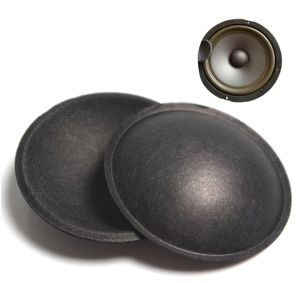Cap

Cap, also known as a "dust cap," is a crucial component in a speaker's structure. Despite its small size, it plays a significant role in protecting and optimizing the speaker's performance. Let's delve into the details of caps and their importance.
Functions of a Cap[edit | edit source]
- Protection: The primary function of a cap is to protect the voice coil and other internal components from dust, debris, and physical damage. This helps maintain the speaker's performance and extends its lifespan.
- Structural Support: The cap also provides structural support to the speaker cone, preventing it from deforming during operation. This is essential for ensuring that the sound produced remains distortion-free.
- Sound Optimization: Beyond protection, the cap helps optimize the directionality of the sound, ensuring clearer and sharper audio. It prevents air from escaping the voice coil, keeping the sound stable and accurate.
Construction and Materials[edit | edit source]
Caps are typically made from lightweight yet durable materials such as:
- Paper: Specialized acoustic paper, often used in mid-range and high-end speakers for its excellent sound properties.
- Plastic: Hard plastic or composite materials offer high durability and resistance to harsh environments.
- Metal: Some high-end speakers use metal caps for optimal performance and durability.
Design and Impact on Sound Quality[edit | edit source]
The design of a cap directly affects the sound quality:
- Shape: The shape (dome, flat, or inverted) can influence how the cone moves and disperses sound.
- Size: The size of the cap should match the size of the cone and voice coil to ensure optimal performance.
- Material: The material must be lightweight to avoid reducing the cone's efficiency but also strong enough to protect internal components.
Maintenance and Replacement[edit | edit source]
Regular maintenance of caps helps sustain the speaker's performance:
- Cleaning: Remove dust and debris from the cap using a soft cloth or brush.
- Inspecting for Damage: Regularly check for cracks or deformations that could impact sound quality.
- Replacement: Replace the cap with a suitable one if necessary to ensure the speaker continues to perform optimally.
Conclusion[edit | edit source]
The cap plays an essential role in protecting and optimizing a speaker's performance. Despite its small size, it safeguards critical components, enhances durability, and ensures that the sound produced is clear and precise. Understanding its function and maintenance helps in maintaining and improving the sound quality of your speaker system.